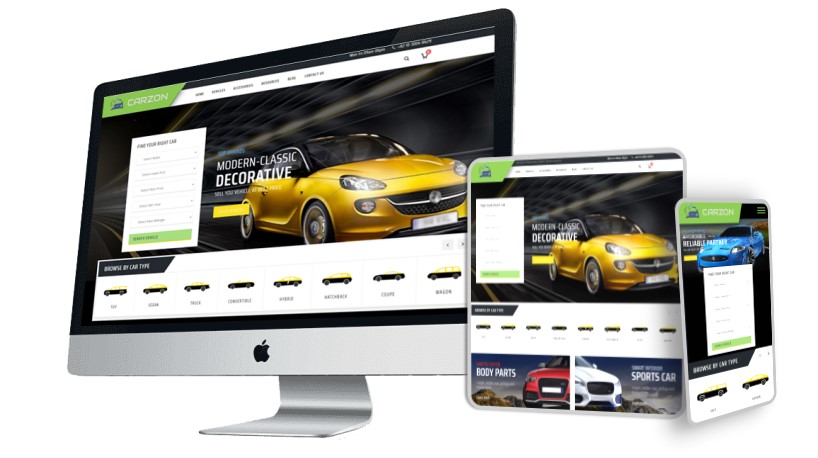Introduction: In today’s digital age, where websites play a crucial role in business success, user experience has become paramount. One of the key factors influencing user experience is the design of a website. A user-friendly website design has a significant impact on how visitors interact with your site, their satisfaction, and ultimately, your overall business goals. This article explores the importance of a user-friendly design of your website and provides compelling statistics to support its significance. Read these website development tips and get your website revamped

When it comes to creating a user-friendly website design, there are several best practices that can significantly enhance the user experience (UX). Here are some key practices to consider: Stop Worrying About Poor Website Design and Check This Out
Intuitive Navigation: Ensure that your website’s navigation is clear, logical, and easy to use. Users should be able to find what they’re looking for quickly and effortlessly.
Responsive Design: Optimize your website for various devices and screen sizes. A responsive design ensures that your site looks and functions well on desktops, tablets, and mobile devices.
Clear and Concise Content: Present your content in a clear and organized manner. Use headings, bullet points, and paragraphs to break up text and make it easy to scan. Keep your messaging concise and avoid jargon.
Fast Loading Speed: Users expect websites to load quickly. Optimize your site’s performance by minimizing file sizes, leveraging caching, and utilizing a content delivery network (CDN) if needed.
Mobile-Friendly Design: With mobile usage on the rise, prioritize a mobile-friendly design. Ensure that buttons, menus, and content are easily accessible and usable on smaller screens.
Visual Hierarchy: Use visual cues such as font size, color, and spacing to create a clear hierarchy of information. Guide users’ attention to the most important elements on the page.
Consistent Branding: Maintain consistent branding elements across your website, including colors, fonts, and imagery. This creates a cohesive and familiar experience for users.
Readability and Accessibility: Use legible fonts, appropriate font sizes, and sufficient color contrast to ensure readability. Consider accessibility guidelines to make your website usable for people with disabilities.
User Feedback and Testing: Incorporate user feedback and conduct usability testing to identify areas for improvement. This helps you understand user behavior and make data-driven design decisions.
Error Handling: Provide clear error messages when users encounter issues or make mistakes. Offer suggestions for recovery and guide users through the error resolution process.
Remember, the best UX practices may vary depending on your target audience and industry. Continuously monitor user behavior and adapt your design based on user feedback to create a seamless and enjoyable user experience.
No, building a good user experience (UX) is not a one-time job. UX is an ongoing process that requires continuous improvement and adaptation. Here are a few reasons why UX is not a one-time effort:
Evolving User Needs: User expectations and behaviors change over time. It’s essential to stay updated with evolving trends, technologies, and user preferences to ensure your website or product continues to meet their needs effectively.
Iterative Design: UX design is an iterative process. It involves gathering user feedback, testing, and refining your design based on the insights gained. Iterative design allows for continuous improvement and optimization of the user experience.
Changing Business Goals: As your business evolves and sets new goals, your website or product’s UX should align with those goals. UX should support and enhance your business objectives, which may require ongoing modifications to meet changing requirements.
Technological Advancements: Technology advances rapidly, introducing new possibilities and user interaction patterns. It’s crucial to leverage new technologies and design patterns to create innovative and user-friendly experiences.
User Testing and Research: User testing and research play a vital role in understanding user behavior, identifying pain points, and uncovering areas for improvement. Regular testing and research help validate design decisions and guide iterative improvements.
Competitive Landscape: The digital landscape is highly competitive, with new competitors emerging regularly. To stay ahead, it’s important to continuously evaluate and enhance your UX to remain competitive and provide a better experience than your rivals.
User-Centered Mindset: UX is rooted in a user-centered mindset that prioritizes the needs and preferences of your target audience. This mindset should permeate your organization, fostering a culture of continuous improvement and empathy towards users.
By treating UX as an ongoing process, you can ensure that your website or product remains relevant, engaging, and valuable to your users. Regular evaluations, user feedback, and iterative enhancements will help you create a sustainable and impactful user experience.
Conclusion: Investing in a user-friendly appearance of your website design is crucial for businesses aiming to create a positive and engaging user experience. The statistics mentioned above clearly demonstrate the significant impact that a well-designed website can have on user engagement, conversion rates, customer retention, and overall business success. By prioritizing user-friendly design principles and keeping up with the latest industry trends, businesses can ensure their websites are optimized to deliver an exceptional user experience.
Remember, your website is often the first touchpoint for potential customers, and a user-friendly design can make all the difference in capturing their attention, fostering trust, and ultimately driving conversions. Can get more information in our partner blogs regarding Digital Marketing Expert Articles

“Unleashing Digital Potential | Transforming Businesses with Innovation & Success”
Our Branding Pathways
Legal | Policies
© 2023-2024- Hyper Deft Digital, All Rights Reserved